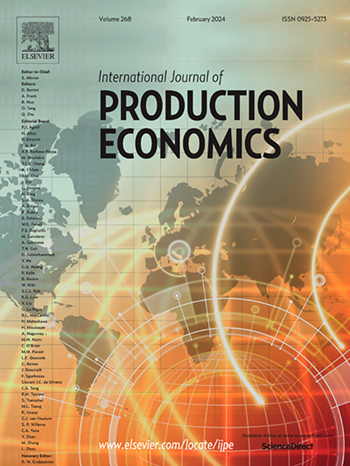基于区块链的供应链溯源系统建模与仿真框架
IF 10
1区 工程技术
Q1 ENGINEERING, INDUSTRIAL
引用次数: 0
摘要
可追溯性提高了供应链运作的透明度,有利于整体绩效和最终客户的感知。区块链技术在数据不变性的基础上促进信任和支持信息共享,是创建强大追溯系统的一个有前途的替代方案。尽管围绕区块链技术的炒作和该领域的大量文献,但由于缺乏实证证据,基于区块链的供应链可追溯系统在多个行业领域的有效性和效率仍不确定。考虑到其特点,模拟是评估供应链管理流程和技术替代方案性能的重要工具。然而,支持供应链中区块链仿真模型构建过程的结构化指南仍然缺失,使得建模者难以创建逼真的仿真模型。因此,这项工作提出了一个新颖的方法论框架,其中包含开发供应链可追溯性 HS 模型的指南,能够将主要的区块链概念整合到管理目的中。通过结合离散事件和基于代理的仿真范例,可以设计出不同粒度的场景。建议的方法整合了基础参考文献中的概念和术语,包括供应链运营参考模型(SCOR)和全球可追溯性标准(GTS)。此外,它还以 ADACOR 整体架构为基础,用于代理化流程。按照设计科学研究方法,基于加拿大龙虾供应链的实际工业案例,介绍了一个概念验证应用。获得的结果反映了该框架在协助开发混合仿真模型方面的多功能性,因为可追溯性是通过反应时间、项目分离、时间筛选和区块链参与率等角度来探索的。本文章由计算机程序翻译,如有差异,请以英文原文为准。
A framework for modeling and simulating blockchain-based supply chain traceability systems
Traceability improves supply chain operations transparency, benefiting the overall performance and the end customer perception. Blockchain technology is a promising alternative to create robust traceability systems, as it promotes trust and supports information sharing based on data immutability. Despite the hype surrounding blockchain technology and the vast literature in the field, the effectiveness and efficiency of blockchain-based supply chain traceability systems remain uncertain across multiple industry sectors, due to the lack of empirical evidence. Considering its characteristics, simulation is a valuable tool to evaluate the performance of supply chain management processes and technology alternatives. However, a structured guide to support the building process of simulation models regarding blockchain in the supply chain is still missing, making it hard for modelers to create realistic simulation models. Thus, this work proposes a novel methodological framework with guidelines to develop HS models regarding supply chain traceability capable of integrating the main blockchain concepts for managerial purposes. Scenarios with different granularity levels may be designed through the combination of both discrete-event and agent-based simulation paradigms. The proposed approach integrates concepts and terminologies from foundational references, including the Supply Chain Operations Reference (SCOR) model and the Global Traceability Standard (GTS). In addition, it is anchored on the ADACOR holonic architecture for the agentification process. Following the Design Science Research methodology, a proof-of-concept application is presented, based on a real-scale industrial case of a lobster supply chain from Canada. Results obtained reflect the framework's versatility to assist the development of a hybrid simulation model, as traceability is explored through the perspectives of time to react, item separation, temporal screening, and blockchain participation rate.
求助全文
通过发布文献求助,成功后即可免费获取论文全文。
去求助
来源期刊
CiteScore
21.40
自引率
7.50%
发文量
266
审稿时长
52 days
期刊介绍:
The International Journal of Production Economics focuses on the interface between engineering and management. It covers all aspects of manufacturing and process industries, as well as production in general. The journal is interdisciplinary, considering activities throughout the product life cycle and material flow cycle. It aims to disseminate knowledge for improving industrial practice and strengthening the theoretical base for decision making. The journal serves as a forum for exchanging ideas and presenting new developments in theory and application, combining academic standards with practical value for industrial applications.

 求助内容:
求助内容: 应助结果提醒方式:
应助结果提醒方式:


